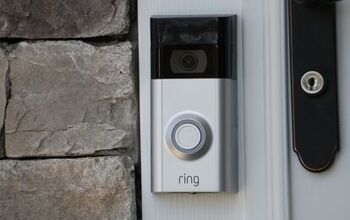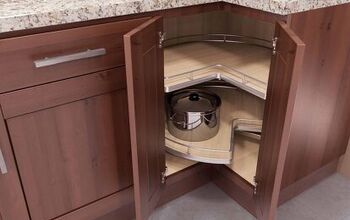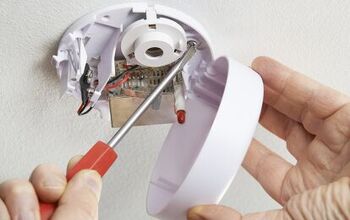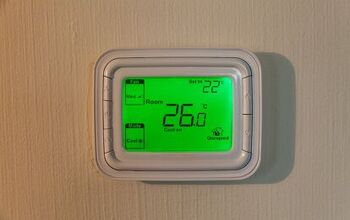Can A House Become Infested With Ticks?

The thought of ticks in your home is enough to give you nightmares, but it may be your reality. Ticks mostly stay outside, but finding them indoors is more common than you may think. So, can a house become infested with ticks?
A house can become infested with ticks, and it’s common in heavily wooded areas with lots of carrier animals. Ticks can latch onto you or your dog or cat, enter your home, dislodge themselves, and reproduce. Once this happens, they can live out their life cycle if you don’t do something about the problem.
Preventative maintenance is the key to controlling ticks inside, as they will stay around your home if your yard is overgrown. It’s not worth risking the diseases that ticks can carry, since some of the illnesses can be difficult to cure. Follow along as we explore how a house can become infested with ticks.
Why Are There Ticks In My House?
The reason you have so many ticks in your house is that you inadvertently tracked them indoors. This can happen for many reasons, but it typically occurs when you walk through areas densely populated with ticks. Whether it’s your yard or your favorite park, you probably visited an area and left with ticks on your body.
Once they’ve dug in, ticks continually feed on their hosts until they’re done, and then they dislodge themselves. After that, they may stay in your house and continually lay eggs. This problem can quickly get out of hand, and many things can cause infestations, including:
1. You Live In A Wooded Area
If your house has become infested with ticks, there’s a good chance it’s because you live in a wooded area. Trees provide the perfect conditions for ticks to hide, feed, and reproduce, especially in humid climates. Ticks often hide on the ground beneath trees, as it’s often shady and humid.
If your home is backed up against the tree line, there’s a good chance that you'll find a lot of ticks. They may move toward your home in search of food, shade, and humidity on particularly sunny, dry days. Ticks may be small, but they can cover a lot more ground than you may think when they’re motivated.
They also sometimes hide on the top of grass blades just past the tree line and wait to latch onto potential hosts. That explains how homeowners accidentally bring ticks into their homes after doing yardwork or even just relaxing outside. You can help resolve your tick problem by trimming the foliage around the edge of the yard toward the tree line.
2. You Have Pets
If you have dogs, there’s a good chance they spend a lot of time outside throughout the day. Whether you take them on walks or you leave them outside for hours at a time, they can encounter ticks. Unfortunately, many dog owners don’t check their pets for ticks when they bring them back inside.
It’s hard to tell that your dog has ticks unless you thoroughly comb its fur and inspect the skin. Ideally, you should try to stop your dog from spending too much time under the tree line if ticks are prominent in the area. That said, preventative treatments are the best option, as it’s not worth risking your dog’s health or getting ticks in your house.
Today, you can give your dog tick prevention treatments that contain permethrin or fipronil. These chemicals can paralyze and kill ticks, which can protect your dog and keep the ticks out of your house. Talk to your pet’s veterinarian to see if they can recommend any specific tick prevention treatments.
3. High Indoor Humidity
High indoor humidity can cause many problems, such as mold, spider infestations, wallpaper damage, and more. Unfortunately, high indoor humidity can also explain why your house has suddenly become infested with ticks. If your house is dry, ticks will probably try to leave or simply die because they dry out too fast.
However, ticks can thrive, feed, and reproduce for a full life cycle if your home’s indoor humidity level is too high. Anything over 50% indoor humidity is too high, and it can attract ticks and other pests. However, ticks will easily thrive if your indoor humidity level reaches 60% to 90%, and the problem can get out of hand.
Ninety percent humidity is unusual, but many people have a 60% indoor humidity level, and that’s enough to attract ticks. Ideally, you should use a dehumidifier to maintain an indoor humidity level between 30% and 50%. You may have to invest in a whole-house dehumidifier if your humidity problem is otherwise unmanageable.
4. You Have A Pest Problem
Having pests in your house is bad enough, but things get worse when they introduce ticks to the equation. Naturally, many common household pests, like mice and rats, are exposed to ticks outside, which often latch onto such animals and feed on them until they’re done, then they dislodge themselves.
Unfortunately, the ticks may dislodge themselves in your home, and you’ll find them roaming around. Female ticks mate with male ticks after feeding, so there’s a chance the tick population in your home will grow. You should be very cautious anytime you see raccoons, opossums, mice, rats, and other furry critters in or around your home.
They are vulnerable to ticks, and you don’t want them to introduce them to your house. Your best bet is to seal the gaps and cracks in your walls and install weatherstripping at the bottom of your doors. That way, tick-carrying critters can’t easily enter your home.
5. Your Lawn Is Overgrown
Keeping up with yard maintenance isn’t fun, but it is necessary if you have ticks or any other common pests. Ticks are unlikely to venture too far into your lawn if you mow it regularly. You can kill ticks by mowing the lawn, and they probably won't return if you keep up with it.
Regularly prune the shrubs in your yard and pull the weeds. It’s also worth spraying your lawn with insecticides containing permethrin at least once yearly to deter ticks. That way, they won’t latch onto you when you walk through the grass.
How To Keep Ticks Away From Your House
The best way to keep ticks away from your house is to create a barrier around your yard. For example, you can largely clear the land in front of the tree line at the edge of the yard and install mulch. That way, ticks won’t have any nearby hiding spots, so they can’t easily latch onto hosts and enter your home.
It’s also a good idea to mow your lawn weekly and pull the weeds in your yard. Ticks are unlikely to stick around if they don’t have many hiding places. Similarly, they won’t likely stick around if there aren’t many hosts for them to feed on.
Because of that, it’s important to keep your pets away from any areas where ticks are prominent. That way, your pets won’t track ticks into the house, and you can protect them from the diseases that ticks can carry.
Summing It Up
Your house can become infested with ticks if you or your pets track them into the house. Overgrown lawns, shrubs, and weeds can also attract ticks and draw them toward your home. Excessive indoor humidity and pests, like mice and rats, can also explain why your house is infested with ticks.
Related Guides:

Nick Durante is a professional writer with a primary focus on home improvement. When he is not writing about home improvement or taking on projects around the house, he likes to read and create art. He is always looking towards the newest trends in home improvement.
More by Nick Durante



























